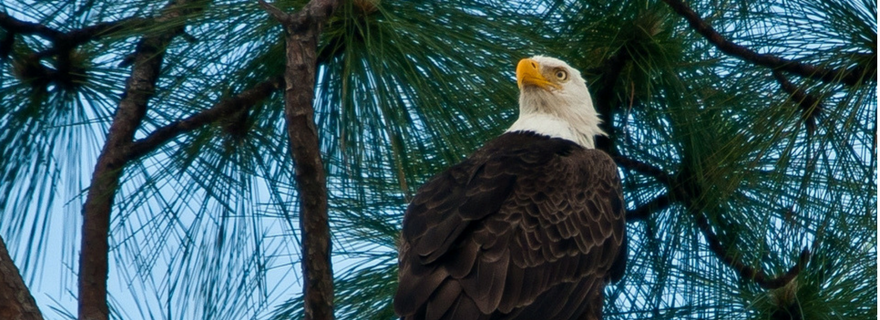With a location smack in the middle of migrating birds’ trek to Central and South America from their summer nesting grounds, Tampa Bay hosts birds seldom seen in other parts of the country. The birds stop at local beaches and wildlife preserves to rest and refuel over a season that extends from October to early November in the fall, and mid-March to late April in the spring.
Check out our five favorite places to birdwatch in Tampa Bay, chosen in part for their accessibility, then post your favorite photos on our Facebook page. You’ll be able to see an amazing number of birds from convenient trails or boardwalks so you won’t need spotting scopes or hiking boots – although closed-toe shoes are recommended.
- Fort De Soto County Park, consistently named among the top beaches in the country, also is a premier stop on the Great Florida Birding and Wildlife Trail. Thousands of birds “drop in” to the park’s diverse habitat as an important stopover before they head over the Gulf of Mexico to points further south. A checklist available online at http://www.pinellascounty.org/park/pdf/bird-checklist.pdf covers the best sites at the park for specific birds and seasons, including vireos, thrushes, flycatchers, tanagers and orioles.
- Honeymoon Island State Park, off Dunedin, wasn’t named for the pair of eagles that has been nesting there since 2008, but they’re among the park’s biggest attractions — besides its spectacular beach. Visitors must stay 300 feet from the nest, but volunteers at the site often have a spotting scope set up to get a close-up view. Ironically, the eagle’s nest is part of the Osprey Trail, a wide natural path with occasional dips, that circles through 80 acres of habitat ranging from mesic flatwoods to mangrove forests providing varied habitat.
- Lettuce Lake Preserve, a county park on the Hillsborough River just north of Tampa, features an easily accessible boardwalk running through pine flatwoods and sprawling cypress swamps. It’s also home to the Audubon Resource Center so you can check with volunteers about specific birds and recent sightings. Tampa Audubon Society holds “Birdwatching for Beginners” every second Saturday here because it features such a variety of birds.
- Celery Fields is in Sarasota but well worth the drive with sightings of more than 200 birds documented by the Sarasota Audubon Society. The 360-acre former farm is now owned by the county, serving as its primary stormwater collection area, so it encompasses both uplands and wetlands accessible via boardwalks.
- Circle B Bar Preserve, south of Lakeland, is also a trip-worthy destination. A partnership between the Polk County Environmental Lands Program and the Southwest Florida Water Management District, much of the original marshlands have been restored. Circle B hosts one of the region’s most impressive bird populations, including wading birds, waterfowl, ospreys and bald eagles, typically visible from handicap-accessible boardwalks. It’s also home to the Polk County Nature Discovery Center and part of the Great Florida Birding and Wildlife Trail.
(And if you miss this fall migration, this checklist will also work during the spring migration.)
By Vicki Parsons, originally published Fall 2017
